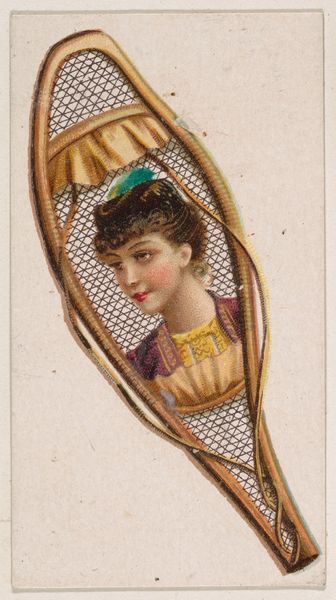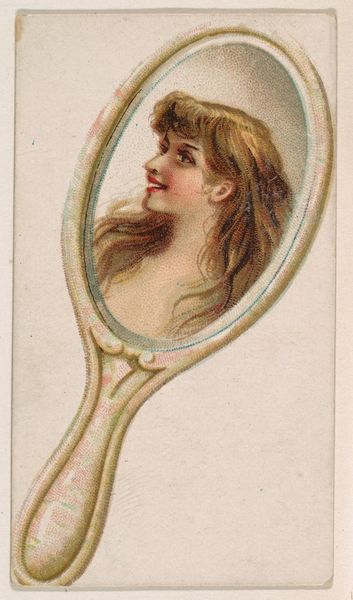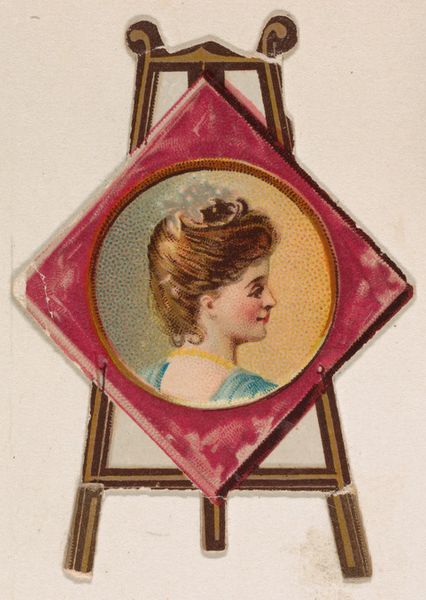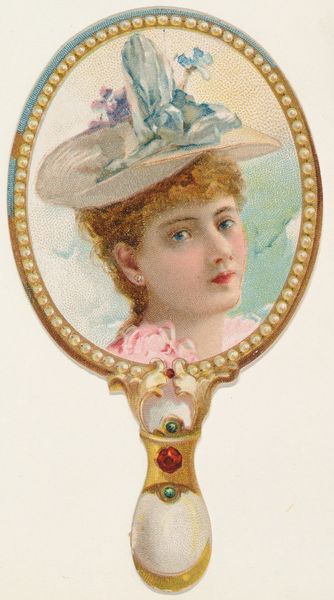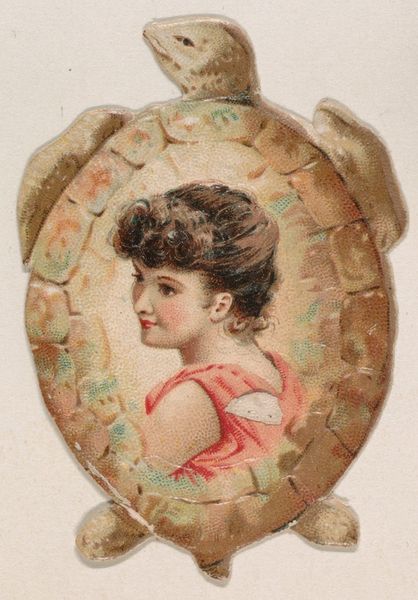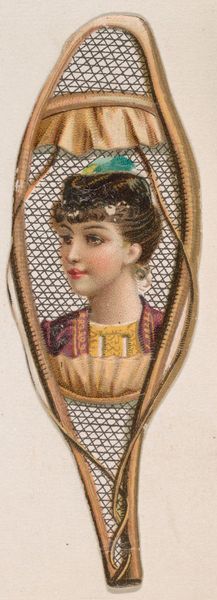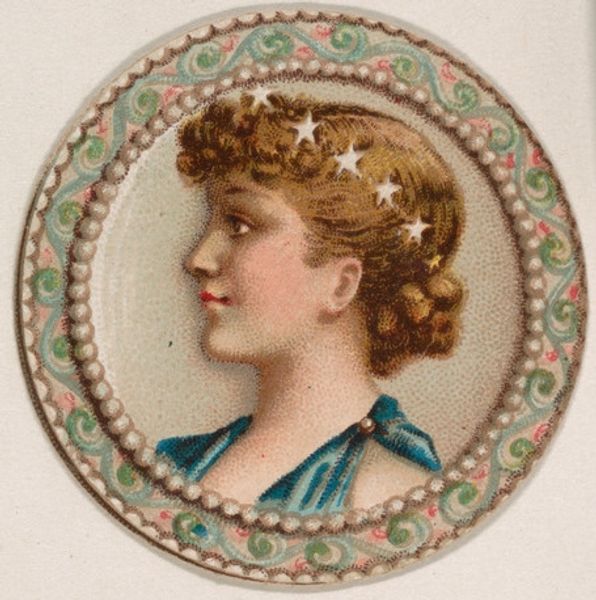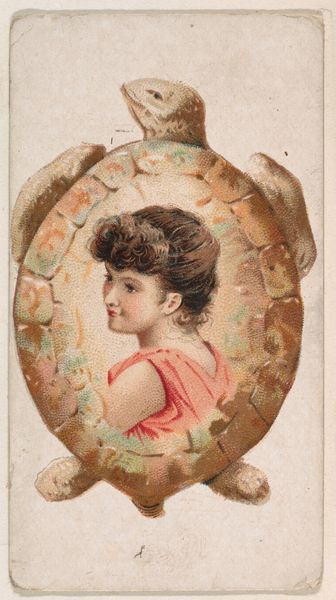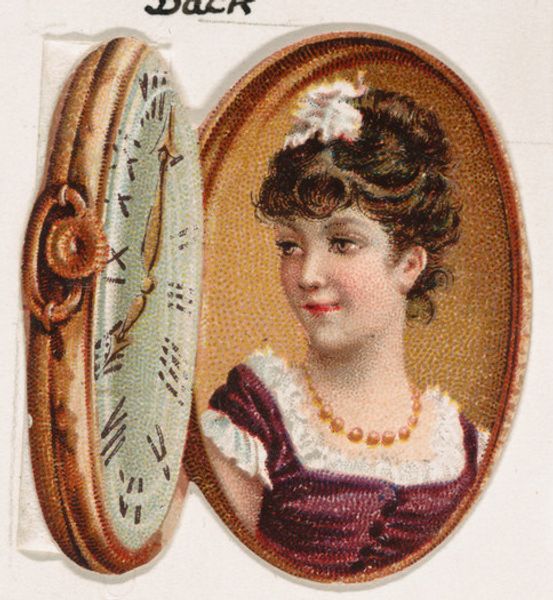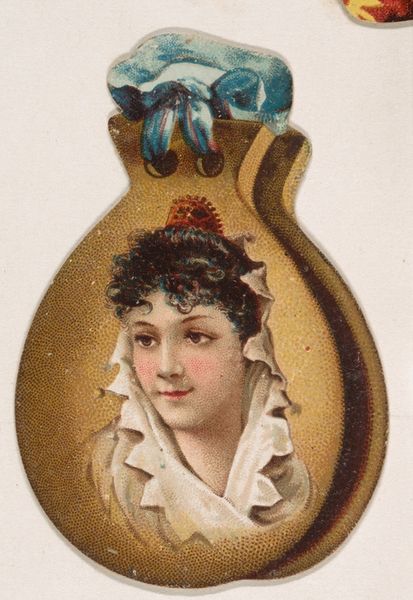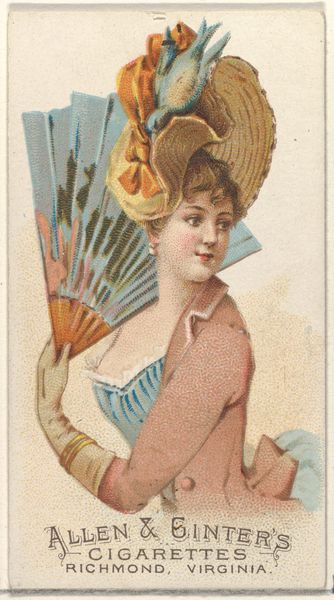
Quiver of arrows, from the Novelties series (N228, Type 3) issued by Kinney Bros. 1889
0:00
0:00
drawing, print, paper
#
portrait
#
drawing
# print
#
paper
#
coloured pencil
#
genre-painting
#
watercolor
Dimensions: Sheet (Round): 1 9/16 × 1 9/16 in. (4 × 4 cm)
Copyright: Public Domain
Editor: Here we have *Quiver of Arrows* by Kinney Brothers Tobacco Company, printed in 1889. It seems to be a chromolithograph trade card. I'm immediately struck by the idealization of femininity represented in this piece, with its delicate pink accents and emphasis on ornamentation. What do you make of it? Curator: It's interesting to consider this piece through the lens of advertising. What narratives is it selling, and who is its target audience? Trade cards like these weren’t just innocent novelties; they were active agents in shaping consumer culture and societal norms. Editor: So, it’s not *just* a pretty picture… Curator: Exactly. Think about the image itself: a quiver, traditionally a symbol of weaponry, is here softened and feminized, adorned with the portrait of a woman. What does that say about the intended consumer's view of women, or perhaps even their aspirations? The ornamental framing of her portrait really underscores the idea of women as objects of beauty. Editor: That’s a stark contrast! So, this image is potentially promoting an image of women as decorative, linking them to both domesticity and desire in ways that might reinforce social power structures? Curator: Precisely. We can also think about how these cards circulated. They would have been collected, traded, and displayed, becoming part of a wider visual culture that normalized certain representations and hierarchies. Considering this is an advertisement by a tobacco company, one can ponder whether the adornments on the quiver serve to obfuscate or euphemize themes around domination or fetishism. Editor: That makes me think about the legacy of these kinds of images. You can still see echoes of this way of portraying women today, which is slightly disturbing. Curator: Yes, the echoes resonate even now, urging us to be more thoughtful about images that reinforce cultural norms. Editor: It’s unsettling to consider how much intention and power were behind what I initially thought was just a decorative card! Curator: Indeed, by critically examining the intersectional politics embedded in historical images like this, we gain crucial insights into the mechanisms of power and representation that continue to shape our world.
Comments
No comments
Be the first to comment and join the conversation on the ultimate creative platform.
